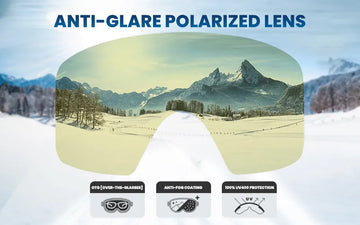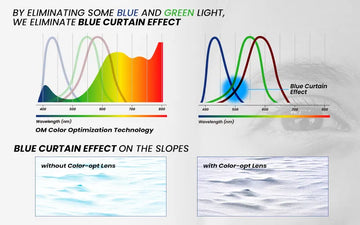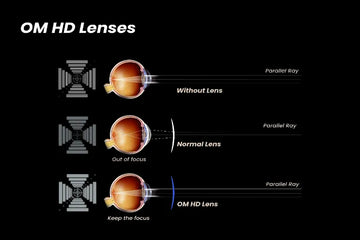スキーゴーグルの技術:OMスーパーアンチフォグ
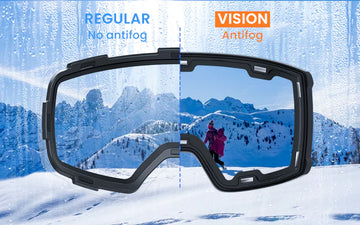
スキーゴーグルのレンズは、水蒸気が結露すると曇ります。結露は息や汗から発生することもありますが、周囲の湿気がレンズに付着することで発生することもあります。
蒸気はレンズに当たると冷えて小さな水滴に変わり、レンズを曇らせ、せっかくの優れたレンズ技術を無駄にしてしまいます。
スキーゴーグルのレンズが曇る速さは、気温と湿度によって異なります。そのため、寒い天候ではレンズがより早く曇ります。
運動強度もゴーグルの曇りやすさに影響します。汗を大量にかくほど運動すると、スキージャケットから逃げる湿気が増え、レンズに水蒸気が付着しやすくなります。
曇り止めスキーゴーグルの仕組み
良質なスキーゴーグルには、曇りを防ぐ機能が備わっている必要があります。そのため、高品質なスキーゴーグルを製造するメーカーは、視界を可能な限りクリアに保つために、様々な特性や機能を取り入れています。その仕組みは以下のとおりです。
複数のレンズ
ほとんどの曇り止めスキーゴーグルは2枚のレンズを使用しています。レンズは二重窓のように配置されており、レンズ間に薄い空気層が生まれます。このシステムにより、顔に近いレンズの方が温度が高くなるため、レンズの温度調節に役立ちます。そのため、水滴が結露する冷たい表面がありません。
曇り止めレンズコーティング
曇り止めスキーゴーグルのもう一つの特徴は、レンズコーティングです。この独創的なコーティングは、レンズ表面に水滴が結露するのを防ぐのに非常に効果的です。
スキーゴーグルに曇り止めレンズコーティングが施されていない場合は、ほとんどのスキーショップやオンラインでスプレータイプのコーティング剤を購入できます。ただし、これらのスプレータイプのコーティング剤は定期的に補充する必要があることに注意してください。また、一部のコーティング剤はミラーレンズのゴーグルには適さないため、使用する際にはご注意ください。
換気
曇り止めスキーゴーグルの最も重要な特徴の一つは、通気性です。通気性が良いと、ゴーグル内部の湿った空気を逃がし、ゴーグルをクリアな状態に保つことができます。
フレームの周囲またはレンズ自体に通気孔があります。ほとんどのスキーヘルメットには、ゴーグルに空気が流れ込むよう、戦略的に配置された通気孔があります。ゴーグルとヘルメットを合わせれば、通気孔が互いに補完し合い、優れた曇り止め効果が得られます。
アウトドアマスターゴーグルの曇り防止方法
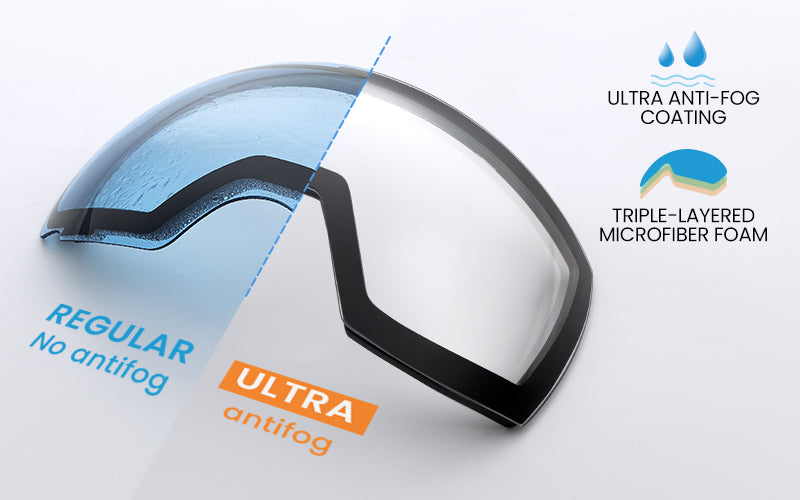
アウトドアマスターの曇り止めスキーゴーグルの最大の特徴の一つは、レンズ素材です。レンズはすべて、木材と綿の抽出物から作られた植物由来の素材、 CAP(セルロースアセテートプロピオネート)で作られています。
CAPはレンズ表面に凹凸を設け、スポンジのように水分を吸収します。さらに、レンズには吸水性を高めるコーティングが施されており、曇り止め効果も向上しています。
もちろん、レンズが吸収できる水分量には限りがあります。しかし、水分が多すぎて曇ってしまった場合は、自然に乾くまで待つか、乾いた布で軽く拭いてください。
Outdoor Masterのスキーゴーグルがクリアな視界を保つもう一つの理由は、デュアルレンズ設計です。二重構造によりレンズに隙間が生まれ、水蒸気が表面に結露して曇るのを防ぎます。
しかし、過酷な状況下でレンズが曇ってしまった場合でも、Outdoor Masterゴーグルは交換レンズを採用しています。このシステムにより、曇ったレンズをクリアなレンズに素早く交換できます。
これらすべての機能により、Outdoor Master スキーゴーグルは欧州 EN174 規格に準拠しています。
しかし、アウトドアマスターのプロプラススキーゴーグル、 ウルトラスキーゴーグル、そしてエコフレンドリースキーゴーグルは、 3倍の曇り止め効果を発揮します。つまり、その曇り止め性能は標準の3倍を上回り、市場で最も高性能なゴーグルの一つとなっています。



